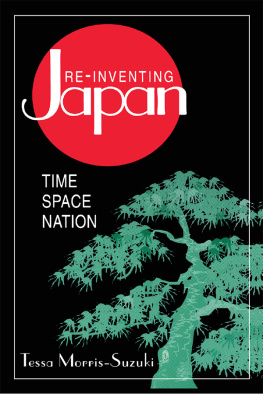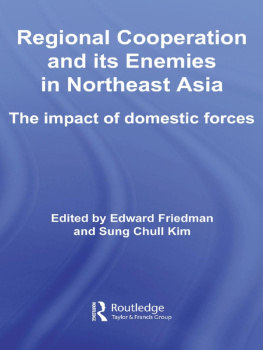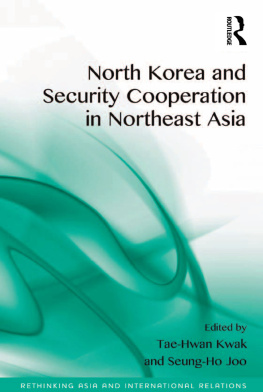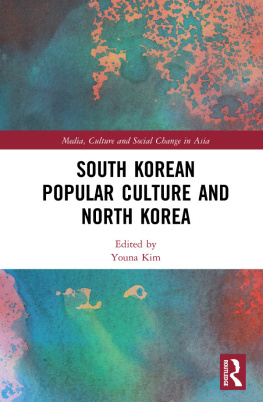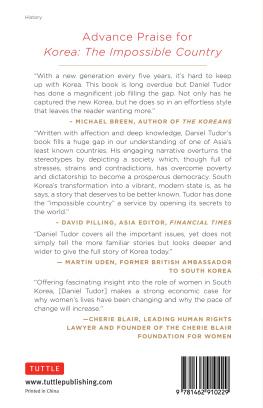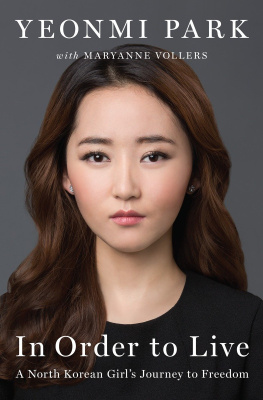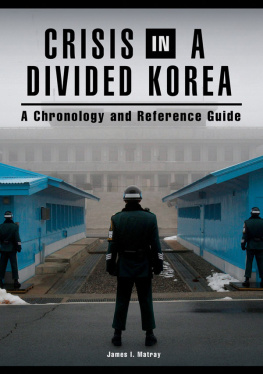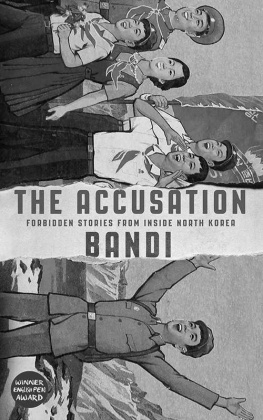To the Diamond Mountains
ASIA/PACIFIC/PERSPECTIVES
Series Editor: Mark Selden
Crime, Punishment, and Policing in China
edited by Brge Bakken
Woman, Man, Bangkok: Love, Sex, and Popular Culture in Thailand
by Scot Barm
Making the Foreign Serve China: Managing Foreigners in the Peoples Republic
by Anne-Marie Brady
Marketing Dictatorship: Propaganda and Thought Work in China
by Anne-Marie Brady
Collaborative Nationalism: The Politics of Friendship on Chinas Mongolian Frontier
by Uradyn E. Bulag
The Mongols at Chinas Edge: History and the Politics of National Unity
by Uradyn E. Bulag
Transforming Asian Socialism: China and Vietnam Compared
edited by Anita Chan, Benedict J. Tria Kerkvliet, and Jonathan Unger
Chinas Great Proletarian Cultural Revolution: Master Narratives and
Post-Mao Counternarratives
edited by Woei Lien Chong
North China at War: The Social Ecology of Revolution, 19371945
edited by Feng Chongyi and David S. G. Goodman
Little Friends: Childrens Film and Media Culture in China
by Stephanie Hemelryk Donald
Gender in Motion: Divisions of Labor and Cultural Change in Late Imperial and Modern China
edited by Bryna Goodman and Wendy Larson
Social and Political Change in Revolutionary China: The Taihang Base Area in the War of Resistance to Japan, 19371945
by David S. G. Goodman
Islands of Discontent: Okinawan Responses to Japanese and American Power
edited by Laura Hein and Mark Selden
Women in Early Imperial China, Second Edition
by Bret Hinsch
Civil Justice in China: Past and Present
by Philip C. C. Huang
Local Democracy and Development: The Kerala Peoples Campaign for
Decentralized Planning
by T. M. Thomas Isaac with Richard W. Franke
Hidden Treasures: Lives of First-Generation Korean Women in Japan
by Jackie J. Kim with Sonia Ryang
Postwar Vietnam: Dynamics of a Transforming Society
edited by Hy V. Luong
The Indonesian Presidency: The Shift from Personal towards Constitutional Rule
by Angus McIntyre
Nationalisms of Japan: Managing and Mystifying Identity
by Brian J. McVeigh
To the Diamond Mountains: A Hundred-Year Journey through China and Korea
by Tessa Morris-Suzuki
From Underground to Independent: Alternative Film Culture in
Contemporary China
edited by Paul G. Pickowicz and Yingjin Zhang
Wife or Worker? Asian Women and Migration
edited by Nicola Piper and Mina Roces
Social Movements in India: Poverty, Power, and Politics
edited by Raka Ray and Mary Fainsod Katzenstein
Biology and Revolution in Twentieth-Century China
by Laurence Schneider
Contentious Kwangju: The May 18th Uprising in Koreas Past and Present
edited by Gi-Wook Shin and Kyong Moon Hwang
The Inside Story of Chinas High-Tech Industry: Making Silicon Valley
in Beijing
by Yu Zhou
To the Diamond Mountains
A Hundred-Year Journey through China and Korea
Tessa Morris-Suzuki
Published by Rowman & Littlefield Publishers, Inc.
A wholly owned subsidiary of The Rowman & Littlefield Publishing Group, Inc.
4501 Forbes Boulevard, Suite 200, Lanham, Maryland 20706
http://www.rowmanlittlefield.com
Estover Road, Plymouth PL6 7PY, United Kingdom
Copyright 2010 by Rowman & Littlefield Publishers, Inc.
All rights reserved. No part of this book may be reproduced in any form or by any electronic or mechanical means, including information storage and retrieval systems, without written permission from the publisher, except by a reviewer who may quote passages in a review.
British Library Cataloguing in Publication Information Available
Library of Congress Cataloging-in-Publication Data
Morris-Suzuki, Tessa.
To the Diamond Mountains : a hundred-year journey through China and Korea / Tessa Morris-Suzuki.
p. cm. (Asia/Pacific/perspectives)
Includes bibliographical references.
ISBN 978-1-4422-0503-1 (cloth : alk. paper) ISBN 978-1-4422-0505-5 (electronic)
1. ChinaDescription and travel. 2. Diamond Mountains (Korea)Description and travel. 3. Korea (North)Description and travel. 4. Korea (South)Description and travel. 5. Morris-Suzuki, TessaTravelChina. 6. Morris-Suzuki, TessaTravelKorea. 7. Kemp, E. G. (Emily Georgiana), b. 1860Travel. 8. ChinaSocial life and customs. 9. Korea (North)Social life and customs. 10. Korea (South)Social life and customs. I. Title.
DS712.M673 2010
915.104'6dc22
2010023685
` The paper used in this publication meets the minimum requirements of
American National Standard for Information SciencesPermanence of Paper
for Printed Library Materials, ANSI/NISO Z39.48-1992.
Printed in the United States of America
To my three sisters
h
Acknowledgments
The kindness and support of many people made this journey possible. I cannot possibly name all those to whom I owe a debt of gratitude, but my particularly deep thanks go to my traveling companions Emma Campbell and Sandy Morris, and also to Ochiai Katsuto who joined us for part of the route. I am deeply grateful to the companies who arranged our travel and to the guides who helped us in China and Korea, and to Sissi Chen and others at China Highlights Tours, who assisted us in arranging our visit to the Thousand Peaks.
My first introduction to Emily Kemp came about through the kind offices of Barbara and Sally Burdon, in whose wonderful Asia Bookroom (surely one of the worlds most delightful bookshops) I found The Face of Manchuria, Korea and Chinese Turkestan . My profound thanks also go to Leonid Petrov of the University of Sydney, for his support and advice throughout the writing of this book; to Kim Yeonghwan of the Peace Museum, Seoul, for his help and encouragement; to Jeong Ho-Seok of the University of Tokyo for his helpful advice; and to Mayumi Shinozaki and other staff members of the National Library of Australia for their assistance in finding obscure materials.
The process of romanizing Korean words and names in a book that deals with both past and present, and both North and South Korea, is a complex one. In this text, I have chosen to follow the system of romanization and
capitalization recommended by the government of the Republic of Korea (South Korea), except in the case of North Korean place names and specifically North Korean terms, where I use the standard form of romanization applied in the Democratic Peoples Republic of Korea (North Korea). Personal names are romanized using the form preferred by the persons themselves. The original romanization is retained in works cited in the endnotes. Chinese words and names are romanized using the Hanyu Pinyin system.
East Asian names are given in the normal East Asian order: family name first. In some cases, certain minor personal details of people encountered on the journey have been altered to protect privacy.
With red flag billowing bravely from its stern, our boat moves away from the Chinese shore and out into the wide, opaque waters of the Yalu River, which marks the border between China and North Korea. The passengers crowd the boats rail, and my two traveling companions and I join them, eagerly straining our eyes toward the pale outlines of the North Korean side. A jagged range of hills rises against the sky, blue-gray at first, but tinged with russet as our boat draws nearer. They are bare hills, empty of trees, their bleak slopes marked only by the terraces of dry fields.


